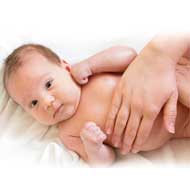Infant Massage - A Natural Way to Healthy Living
One cannot underestimate the power of touch in an infant's life. Touch is the first way in which a baby can communicate with the people around him. With regards to the bonding between a parent and a child, touching is the way babies learn about being loved and cared for.
Massaging your infant or young child is an excellent way to develop a bond that will last a lifetime. Through regular massages, parents become sensitive to an infant's cues and can respond accordingly. This builds up a sense of trust in your baby and can affect all his subsequent emotional and social relationships.
The benefits of massage for infants and children range from the physical to the emotional such as:
- Massages enhance the bonding process and attachment between parents and children
- Infant massages may help relieve symptoms of colic and improve digestion
- A soothing massage before bedtime can induce a deeper sleep and more regular sleep patterns
- Regular massages can soothe an irritable or fussy baby as it calms down the child's central nervous system
- Both parent and child can relieve stress and tension through a baby massage
- Massage therapy for children may help improve the functioning of the respiratory system
- Massages help improve muscle tone and increase coordination
- Massages may help boost your child's immunity
- For children with development disabilities or emotional and mental challenges, a loving massage can work wonders. Massage can improve muscle tone, sensory integration, and tactile development
- Massage helps improve feelings of self-esteem, trust, respect, and acceptance
- Massage can enhance the communication between parent and child
When it comes to massages for infants and babies, the techniques are totally different from those used in adult massages. Communication rather than manipulation is what is required. When massaging your baby, it is important to always make eye contact and smile at him. Respond to his babbling and cooing and touch him gently and slowly. Over time, as a parent, you will begin to recognize his positive and negative cues and make the necessary adjustments to your technique. For example, if he turns his head away, cries, or arches his back, he may not be comfortable with what you are doing. Always remember, you are not performing a massage on your baby but rather performing it with your baby!
Read more articles from the General Discussion Category.
 Find Pose
Find Pose

